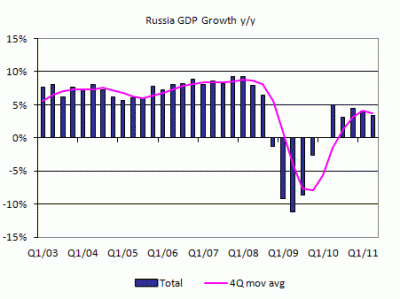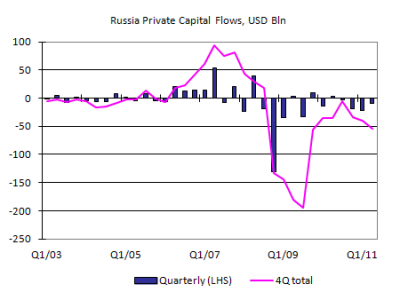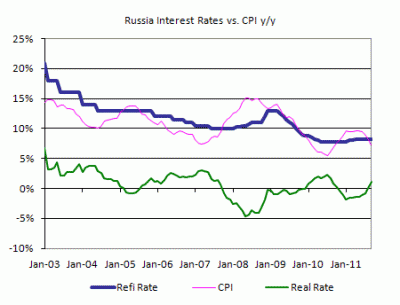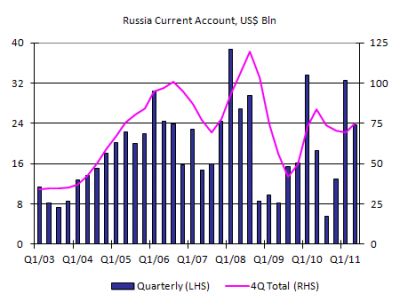Russian Currency Outlook Negative Due To Falling Oil Prices
By Win Thin
WTI oil is making new lows for this cycle around $75 per barrel, so it’s no surprise that USD/RUB is making news highs. Russia remains an oil play, and with commodity prices vulnerable, we see further weakness ahead for the ruble. USD/RUB has already broken the 2010 highs and is approaching an important level at 32.966, the 62% retracement level of the big 2009-2011 drop. Break targets the 2009 high around 36.5584. USD/RUB is actually leading oil prices, as WTI oil has yet to test its 50% retracement at around $73.76 of that same move.
The central bank has been actively intervening in recent weeks to support the ruble by selling USD. Today, Deputy Chairman Shvetsov confirmed that the so-called “floating corridor” for the ruble basket was 32.5-37.5. Last week, central bank First Deputy Chairman Ignatiev said that he doesn’t rule out widening the ruble corridor. The band is now 5 rubles wide, and continues a slow and steady process of liberalizing the ruble exchange rate regime. So far, the reserve losses have been fairly small, dropping $19 bln from the August peak of $545 bln to $526 bln in the week ended September 23. We expect a larger reserve loss to be reported for last week and we cannot rule out adjustments to the trading band if EM sentiment continues to deteriorate. Widening or shifting the band will likely be seen when authorities become uncomfortable with the pace of reserve loss.
The floating corridor has been in place since November 2009 and was originally 35-38 but the central bank has gradually moved that lower. Back in April 2010, central bank Chairman Ignatiev said that it may come “very close” to a ruble free float within 12-18 months. While the trend towards liberalization should continue, a free float is unlikely in this current uncertain environment. The near-term RUB outlook will be determined by the global backdrop and like Latam, Russia remains vulnerable to lower oil and commodity prices.
Meanwhile, the economy is slowing and likely to continue slowing due to lower commodity prices and the weak global growth outlook. CPI inflation eased to 7.2% y/y in September, the lowest since September 2010. We think this will give the central bank cover to start easing soon to help jumpstart the economy. The budgetary outlook remains one of the biggest risks in Russia, as an oil price of $100 for Urals has just been assumed for 2012-2014, which was increased from $93 assumption back in June. Urals is currently trading around $99, down from near $120 in mid-September, and has averaged $109 so far in 2011. Given the global growth outlook, we suspect that the 2012 oil price assumption is too rosy, and that further adjustments to the budget will be necessary next year.
This fiscal uncertainty may be enough to prevent any ratings upgrades ahead, but we do not think the situation will worsen enough to lead to downgrades. Our sovereign rating model has Russia as a very solid BBB+/Baa1/BBB+ credit compared to actual ratings of BBB/Baa1/BBB. The political situation leaves a lot to be desired, with the return of Putin to the presidency next year unlikely to change the status quo. Yes, there is stability, but there is a sense that Russia is basically treading water and relying on high commodity prices rather than making much-needed structural reforms to the economy to boost competitiveness and entrepreneurship.




Comments are closed.